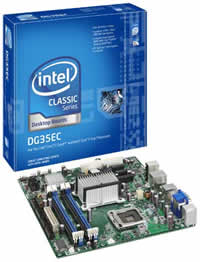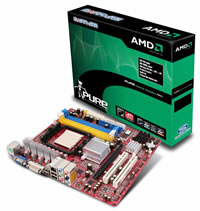Difference between AMD and Intel Motherboards
Key difference: The main difference between AMD and Intel motherboards is that they only accept the same kind of processor. Hence, an AMD motherboard would only work with an AMD processor, and likewise, an Intel motherboard will only work with an Intel processor, and not the other way around.
 A motherboard is an essential component of any computer. It is a printed circuit board (PCB) that is responsible for holding all of the crucial components of the system, including but not limited to the CPU and memory. The motherboard also provides connectors for other peripherals devices, such as the DVD player, USB drives, sound cards, video cards, network cards, etc. It also provides electrical pathways so that the components attached to it can communicate.
A motherboard is an essential component of any computer. It is a printed circuit board (PCB) that is responsible for holding all of the crucial components of the system, including but not limited to the CPU and memory. The motherboard also provides connectors for other peripherals devices, such as the DVD player, USB drives, sound cards, video cards, network cards, etc. It also provides electrical pathways so that the components attached to it can communicate.
Intel and AMD are two of the many companies that make and sell motherboards. The main difference between AMD and Intel motherboards is that they only accept the same kind of processor. Hence, an AMD motherboard would only work with an AMD processor, and likewise, an Intel motherboard will only work with an Intel processor, and not the other way around.
Other companies also produce motherboards that are compatible with one of the processors. However, till date, there are no motherboards that are compatible with both the processors. The reason for this is the fact that each processor requires a different socket type. Intel motherboards have LGA 1156 and LGA 1366 sockets, while AMD motherboards have AM2 and AM3 sockets.
However, the fact that an AMD motherboard would only work with an AMD processor, and likewise for Intel, the sales and market share of Intel and AMD motherboards directly correspond to the sales and market share of Intel and AMD processors. AMD is the only significant rival to Intel in the central processor (CPU) market, especially for the x86 based personal computers. Together, Intel and AMD hold 99.1% market share of the CPUs sold for Q3/2011. In this, Intel had an 80.3%, share while, AMD amounted to 18.8%.

AMD and Intel are always competing with each other. They always aim to come out with the next best thing and stay a step ahead of each other. Hence, their products are always closely related with minor differences that each of the company thinks will make their product better. Due to this, the two motherboards are virtually the same, other than in terms of processor compatibility. They have similar components like memory, hard drives, graphics cards, etc., as all these components have been more or less standardized and hence use the same slots.
The number of slots and the amount of RAM that the motherboard can accommodate is mainly dependent on the make and model of the motherboard. This of course has an effect on pricing. Hence, a motherboard with more SATA ports and/or with more RAM compatibility will cost more.
However, a generalization is that AMD tends to be quite a bit cheaper than Intel. Intel is considered by most to have a better performance, even if by a slight margin. Due to this, Intel is considered to be priced higher. Hence, AMD is now considered to be the budget choice, whereas Intel has become synonymous with a performance choice. Still, a number of people tend to choose AMD over Intel because the AMD and Intel chips and circuit boards provide almost identical functionality, but the AMD version is much cheaper.
Image Courtesy: worldcomputerfair.blogspot.com, topnews.in









Comments
Anonymous
Tue, 01/24/2017 - 01:34
123
Tue, 05/09/2017 - 22:49
I prefer intel to AMD, bcos AMD CPU generates much heat than intel CPU.
Jah'swil
Sat, 06/06/2015 - 11:03
Add new comment